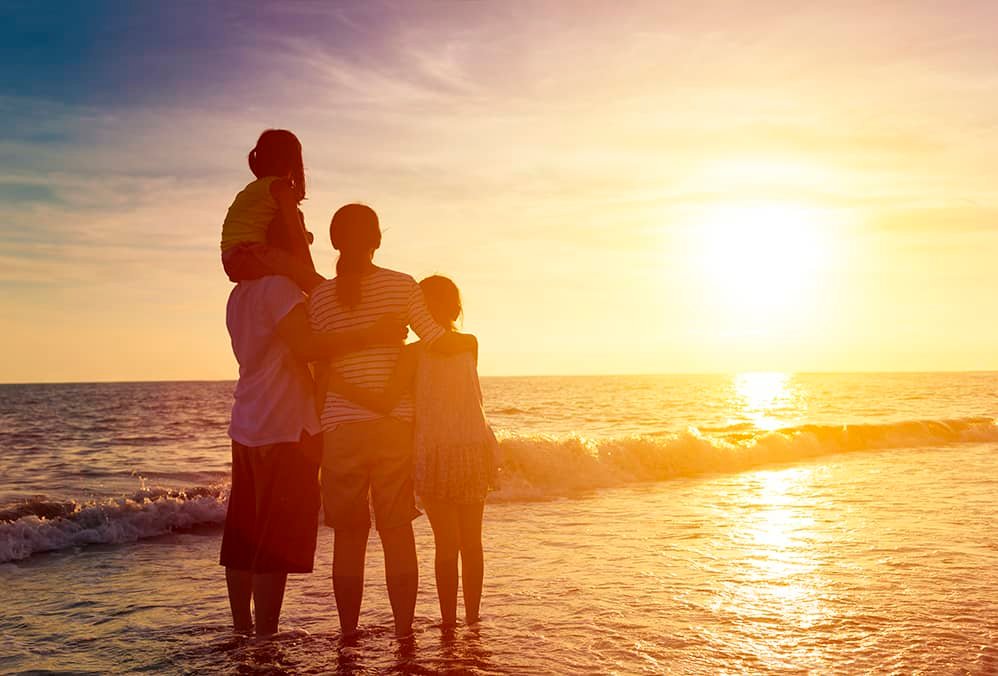


The population of Israel is estimated to be about 9.1 million people.
It is most prominently characterized by an unprecedented diversity. The country’s inhabitants can be mainly divided into Jews (about 76%) and Arabs (16%) with an additional possible subdivision relating primarily to countries of origin. The Jewish population can also be divided into religious and secular; with the latter including various immigrant communities of varying cultural preservation degrees. In a similar manner, the Arab community in Israel can divided into groups of Christians, Muslims and Druze. The country has several small religious groups defined by ethnicity or religion, this most notably includes the Circassians and the Samaritans, as well as minor Christian communities originating in Europe such as the German community of Beit El residing in Zikhron Ya’akov.
An additional interesting characteristic of the Israeli population is its rapid growth rate, atypical for a developed country. Since the State was established, the number of its citizens has increased almost tenfold, due mainly to waves of Jews immigrating from countries all around the world. Nowadays, the country is a densely populated one, despite the fact that large parts of it are thinly settled. The population also averages as young (the median age is estimated to be 28.3 years), while the infant mortality rate is considered to be rather low (5.8 deaths for every 1000 births) and the overall life expectancy is a high one (78.7 years).
Israel’s Jewish Inhabitants
In1948, at the height of its War of Independence (which spanned from 1947 to 1949), the State of Israel was established. This signified the resolution of a long process during which Jews from around the world had begun returning to their historical homeland. Indeed, since it was founded, around 2.7 million Jewish people have immigrated to Israel from over 130 countries. These ongoing waves of immigration have left their indelible mark on the country’s demography, politics and society.
While immense, this growth in Jewish numbers cannot be said to have been uniform. Rather, it has occurred over four main waves of Aliya (the Hebrew word noting the immigration of Jews to the Land of Israel). Between the years 1948 and 1951, Israel has absorbed around 700,000 Jewish immigrants and a result of this was the fact that its population was thus doubled. In the middle of the 1950s, an additional 170,000 Jews immigrated to Israel from North Africa and Romania. In the beginning of the 1960s, another 180,000 people arrived from North African countries. In the early 1990s, about 900,000 immigrants came from the former USSR countries and yet another 60,000 had arrived from Ethiopia.
Due to this profusion of different countries of origin, the Jewish people in Israel are quite varied. Since the State was established, its different governments had adopted a “melting pot” ideology-driven policy. Despite this, many immigrant groups in the country have preserved their cultural traditions to varying degrees. At the same time, the percentage of native-born Israelis (known as “sabers”) has been gradually growing and today this group represents the majority of Israeli Jews (65%). This continuous process, together with an increased rate of intermarriage among people from the various Jewish communities (defined by the different countries of origin) and the growing influence of Western culture, have created a gradual blurring when it comes to the differences between those varying Jewish communities.
Jews in Israel can also be split into sub-divisions based on their different level of religious observance: the Ultra-Orthodox make up 12% of the Jewish population, religious Jews make up 10%, those defining themselves as traditional – 35% and secular people account for 43% of Israel’s Jews.
Israel’s Non-Jewish Inhabitants
While the country is a home to many non-Jewish groups, the largest one is Arabs, who represent about one fifth of the country’s population. Most of them live in Arab settlements across the Galilee, the eastern coastal plain and in the north of the Negev Desert. They also make up for big parts of the population in several cities such as Jerusalem, Haifa, Akko and Ramle.
The biggest fraction among Israel’s Arabs are the Sunnite Muslims, with only a tenth of Israeli Arabs being Christians (and of those, most are members of the Greek-Orthodox Church). Other fractions include the Bedouins, Muslim Arabs who have conducted a nomadic way of life in the desert for generations, yet nowadays they live in permanent residencies, scattered mainly across the northern Negev. The Druze are a religion who originated and separated from Islam, yet ethnically they are also Arabs.
A few other prominent ethnic and religious groups in the country include:
The Druze: they are members of a religion which had developed from the Shiite section of Islam back in the 11th century and whose followers are spread out across Syria, Lebanon and Israel. Around 115,000 Druze live in Israel nowadays, in 17 settlements found on Mount Carmel, in the Galilee and on the Golan Heights.
The Circassians: these people are religiously Muslim, yet ethnically non-Arab and they originate from the Caucasus. When their country had been conquered by the Russians back in the 19th century, many had immigrated to the Ottoman Empire, and so some of them had arrived in the Land of Israel, establishing here the villages of Rikhaniya and Kafr Kama.
The Samaritans: of an origin closely related to that of Jews, there are members of a national-religious community, which had developed in the Land of Israel following the Assyrian conquest and destruction of the Kingdom of Israel. The Assyrians had exiled the majority and more influencing people of that kingdom and those who were left behind in the land had subsequently mixed with exiles from other conquered nations who were settled in Israel and the region by the Assyrians. Back in antiquity, this community was a large and powerful one. However, several failed rebellions during the Byzantine Empire’s time along with pressure exerted by the neighboring Muslims to convert and take on the religion of Islam have gradually and substantially reduced their numbers. Nowadays, there are about 700 Samaritans left, living in the cities of Nablus and Holon.
Prominent Communities
Around three hundred people per square kilometer populate the Land of Israel, living mostly in urban settlements such as towns and cities. Yet, the population distribution is not uniform across the country: the majority of people reside and work in the area along the coastal plain, while the Negev Desert (which makes up over half of the country’s geographical area) is thinly populated.
About 91% of Israel’s inhabitants lead their lives in urban settlements, made up by populations of over 2000 people each. An estimated quarter of them live in one of the four major cities (Jerusalem the capital, Tel Aviv, Haifa and Rishon Le’Tziyon). The biggest city in the country is Jerusalem, with its population being around the figure of 746,300. Some 392,000 people reside and work in Tel Aviv, while over 1.6 million people do so in Tel Aviv’s metropolitan area, which extends all the way up to Herzliya in the north and down to Rishon Le’Tziyon in the south.
The early part of the 20th century gave rise to the development of two types of agricultural settlement which are specific to Israel, namely the kibbutz and the moshav. The first is a community settlement, based on communal ownership of the properties, means of production and consumption shared by its members. The latter is a form of agricultural village combining elements of private individual ownership together with elements of a cooperative, for example mutual financial and social aid along with communal purchases and marketing. In the beginning of the 1990s, following social changes in the political sphere of Israeli society as well as a farming crisis, many of the principles which had guided the moshavim were eroded and the majority of the kibbutzim have also undergone massive reforms, including varying degrees of privatization.
Other forms of settlement which are unique to Israel include the Moshava, which was particularly typical during the beginning of the modern Jewish settlement of the land and could be described as an agricultural settlement of small farms with the means of production remaining private. During the first few years of Israel’s existence, its governments also established a type of urban settlements called development towns, meant to provide a housing solution for the many new (mainly Jewish) immigrants and to carry out a policy of population dispersion across the land. Most of these town were founded far away from Israel’s major urban centers.

The Land of Israel is situated in a subtropical climate area, with offers two main seasons: a rather hot and dry summer alongside a cold and semi-wet to wet winter. However, thanks to generalized influences such as Israel’s being positioned between a sea to its west and two different deserts in the east and south, as well as more localized influences like the varying altitudes, the weather in Israel can be quite diverse, offering those vacationing in Israel a huge range of activities, from skiing at the snow-covered Mount Hermon in the north to swimming and diving in the southern and sunny Bay of Eilat.
As a rule, Israel can be divided into three main climate areas. In the northern and central parts of Israel, the weather tends to be Mediterranean, mainly translating into a hot summer and a rather rainy winter. The coastal plain, which is the most densely populated part of the country, is characterized by humidity during the summer months while the winter is usually quite a comfortable season. Meanwhile, up in the mountainous areas of the land, summer is marked as dry while the winters can be rather cold. To the south and east, Israel is a desert, with a climate that is both hot and dry during the day with marked drops in temperature during the night. Between these two main areas, the desert and the Mediterranean regions, lies the semi-arid zone, where the climate is a transitional one.
Fittingly, Israel is a land characterized by bright sunshine and its amounts of light and sun radiation are among the highest recorded in the world. This ensures any visitor a lovely suntan, but also requires taking the appropriate protection.
Most of the country’s precipitation is provided by the rainy winters, with the Hermon, as the land’s highest mountainous peak, being covered by snow every single year. The majority of the Mediterranean climate area sees more than 400 millimeters of rain falling each year, while the desert areas are marked by a rainfall of less than 250 millimeters in the same period of time. The semi-arid region is characterized by rainfall of somewhere between 300 and 400 millimeters annually. While the rainy season officially starts in October and ends in May, the majority of the rains fall during the months of December to February. The heat which marks the dry season peaks around the months of July and August.
The temperatures are generally quite comfortable during the months of September to November and April through June. This time of the year is marked by few rains and sunny days, making it ideal for beach going and pleasant hiking through the desert areas.
When visiting during the summer months, one should pack light clothing and it’s also recommended to bring bathing suits. If winter is the time of visit, one should pack warm clothes and just in case, also bring an umbrella. The winter tends to be quite comfortable, making outdoors hiking a wonderfully pleasant option. If one encounters an unusually rainy week, the southern port city of Eilat can always offer shelter as it is practically perpetually sunny.

The official languages of the State of Israel are Hebrew and Arabic. While not an official language, English is regarded as the main language for international communication and therefore is widely spoken by a majority of Israelis and it’s also heavily featured on most signposts as well as commercial products.
Spoken by six million Jewish people as well as other inhabitants of the land, Hebrew is the most common language. The next one is Arabic, which is common amongst over a million people, whether they’re Arabs, Jews who originate from an Arab country or people who have set out to learn the language. Israel is considered to be a melting pot due to the many immigrants who have populated it, additional languages can be heard among the various communities, with the most common ones being Russian (around 900,000 speakers), Jewish-Arabic (300,000) and Yiddish (200,000).
